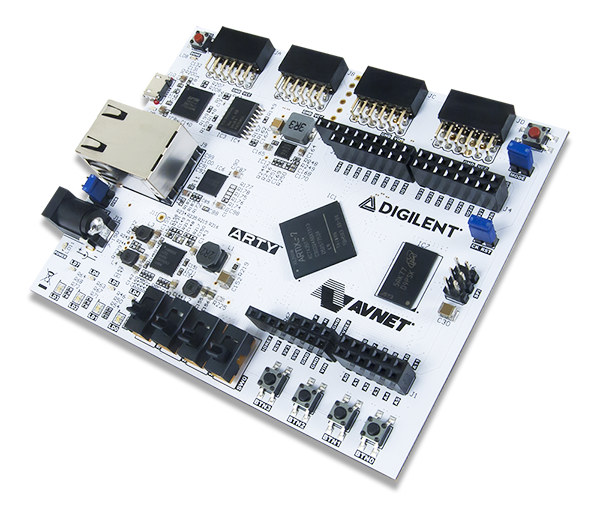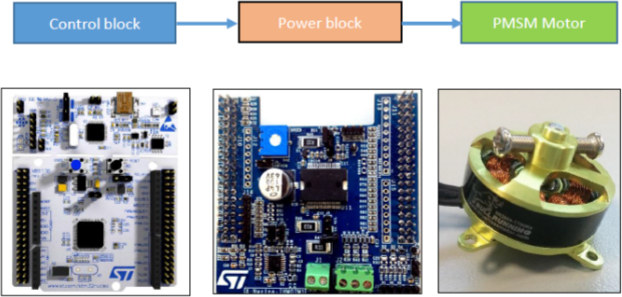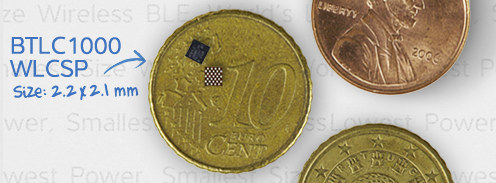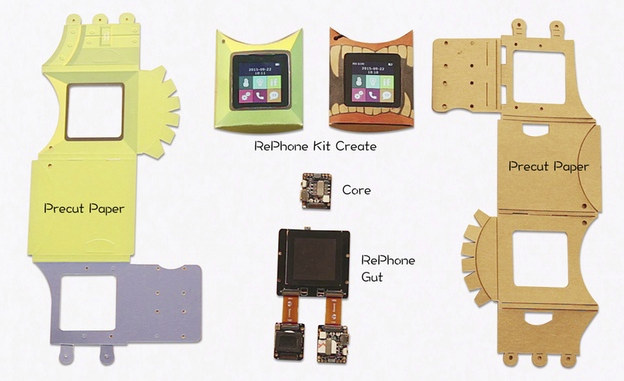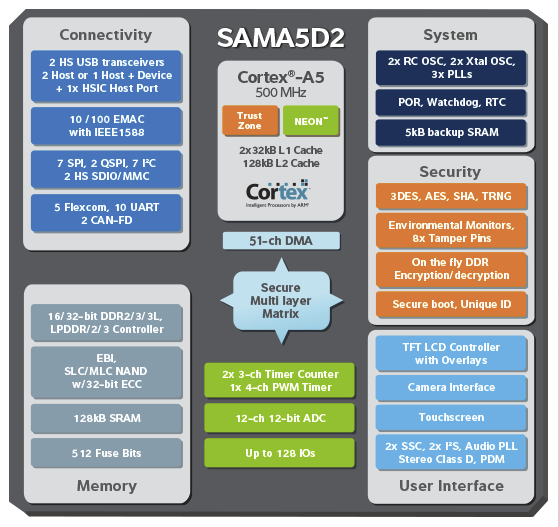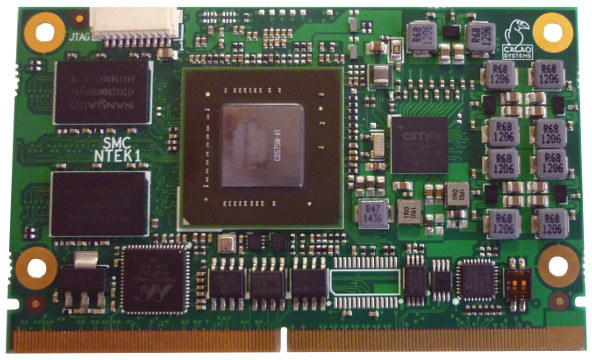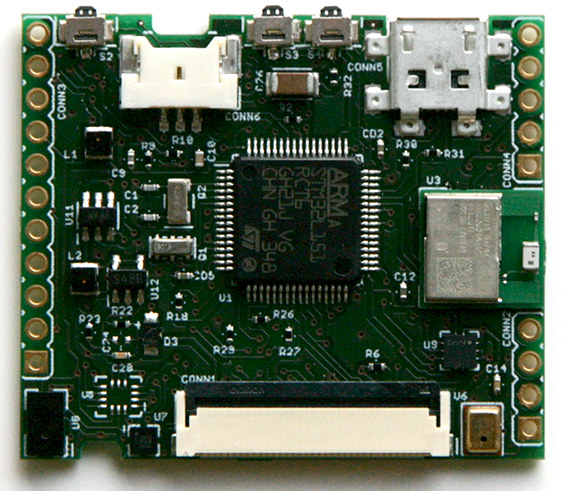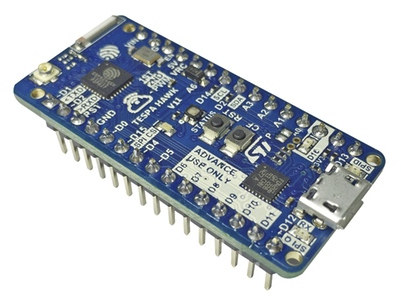Low cost FPGA boards with Arduino headers are nothing new, as we’ve seen before with Arduissimo and Papilio DUO, but both of these boards are based on Spartan 6 FPGA, while the recent Digilent ARTY board is powered by an Artix-7 FPGA. Beside the hardware differences, Spartan 6 FPGAs only support Xilinx ISE Design Suite, while Artix-7 parts are also supported by Vivado Design Suite, which according to Xilinx has a much better workflow and user interface. Digilent ARTY specifications: FPGA – Xilinx XC7A35T-L1CSG324I with 33,280 logic cells, 1,800 Kb block RAM, 90 DSP slices, and 250 I/O pins System memory – 256 MB DDR3L SDRAM Storage – 16 MB of QSPI Flash Connectivity – 10/100M Ethernet Expansion interfaces 4 Digilent compatible Pmod interfaces enabling 32 user I/O pins: 2 Pmods routed as differential pairs, paired to fit dual-wide Pmods Arduino UNO R3 shield / chipKit interface Debugging – USB-UART Interface, […]
STMicro Introduces $35 STM32 Motor Control Nucleo Pack
STMicroelectronics has recently launched P-NUCLEO-IHM001 motor control starter kit with NUCLEO-F302R8 Cortex M4 MCU board, X-NUCLEO-IHM07M1 driver board for BLDC (Brushless DC) and PMSM (Permanent Magnet Synchronous Motor) electric motors, as well as a Bull Running motor often used in RC helicopters and quadcopters. Technical specifications of the three hardware “blocks” of the kit: X-NUCLEO-IHM07M1 driver board: Three-phase driver board for BLDC/PMSM motors based on L6230 Nominal voltage range from 8 V to 48 V DC 2.8 A output peak current (1.4 A RMS) Non dissipative overcurrent detection and protection Compatible with ST 6-step or ST FOC control algorithm Support for sensorless and sensor mode Hall / encoder motor sensor connector and circuit Configurable jumpers for motor current sensing Potentiometer available for speed regulation ST morpho connectors (found in Nucleo boards) NUCLEO-F302R8 MCU board: STMicro STM32F302R8 Cortex-M4 @ up to 72 MHz with 64KB Flash memory and 16KB SRAM Expansion […]
Atmel Unveils the World’s Smallest Bluetooth 4.1 LE SoC, and BTLC1000 Xplained Pro Development Kit
Atmel has just announced it is now shipping SmartConnect BTLC1000 Bluetooth Smart (BLE 4.1) SoC in production quantities. The chip is remarkable thanks to its size, as the company managed to pack an ARM Cortex-M0 MCU, a transceiver, a modem, MAC, PA, TR Switch, and Power Management Unit (PMU) into a 2.26×2.14 mm package. Atmel SmartConnect BTLC1000 Bluetooth LE SoC key features and specifications: MCU – ARM Cortex M0 @ 26 MHz 128KB IRAM/DRAM, 128KB ROM Connectivity – Bluetotoh 4.1 Smart with L2CAP service layer protocols, Security Manager, Attribute protocol (ATT), Generic Attribute Profile (GATT) and the Generic Access Profile (GAP). Proximity, Thermometer, Heart Rate, Blood Pressure, and others profiles are also included in the protocol stack. I/Os – Up to 15, including 2x UART, 2x SPI, and 2x I2C. Hardware Crypto – AES-128, SHA-256 Operating Voltage – 1.8 – 4.3V Power Consumption – > 4mA in RX, and >3mA […]
RePhone Kit Create is a DIY Phone and Cellular Development Kit (Crowdfunding)
Seeed Studio has design a modular and open source phone it calls RePhone Kit Create. The kit allows you, or/and your kid(s), to assemble their own phone based on building blocks including a 2G or 3G core module, a touchscreen display module, an audio module, and pre-cut, seawable, washable, and easily drawable Kraft paper to make the case. The kit can also be used for IoT applications using cellular and Bluetooth connectivity, and extra Xadow modules GPS, NFC, motion sensors, camera and more.. Two cellular “core” module can be used: RePhone GSM + BLE module with the “world’s smallest System-on-Chip (SOC) for Wearables and Internet Of Things”, GSM, GPRS and Bluetooth 2.1 and 4.0 support. RePhone Core Module 3G with a “powerful microcontroller”,a standard Xadow interface (USB, GPIO, I2C, SPI, UART, EINT), support for speaker, two microphones and a headset, a Nano SIM, and support for HSPA/WCDMA:850/1900 and GPRS/EDGE:850/1900. Voltage: […]
Atmel Introduces SAMA5D2 Cortex A5 SoC with Extended Temperature Range, Lower Power Consumption
Today, the news broke out that Atmel will be bought by Dialog Semiconductor for about $4.6 billion. The Anglo-German company is little known as their main products are PMIC, audio and connectivity chips, but they’ve still managed to get the financing to purchase Atmel. But that’s not the purpose of the post today, and instead I’ll cover a new SAMA5 Cortex A5 SoC recently announced by the company, targeting industrial Internet of Things, wearables and point of sale applications. SAMA5D2 key features and benefits: ARM Cortex-A5 core running at 500MHz (785DMIPS). Floating point unit (FPU) for high-precision computing and accelerated data processing. 128KB of L2 cache for system performance Low power consumption Less than 150mW in active mode at 500MHz with all peripherals activated Less than 0.5mW in low power mode with SRAM and registers retention Sub 200µA in retention mode with context preserved New backup mode with DDR in […]
Calao Systems SMC-NTEK1 is a SMARC System-on-Module Powered by Nvidia Tegra K1
Calao Systems has introduced a new system-on-module compliant with SGET SMARC specifications, and powered by Nvidia Tegra K1 quad core Cortex A15 processor, that targets embedded systems for vision, video, data analytic and high computing applications. Calao SMC-NTEK1-IXX module specifications: SoC – Nvidia Tegra K1 quad core Cortex A15 processor with a Kepler GPU System Memory – 2GB DDR3L Storage – 8 GB e-MMC, 8 MB SPI Flash, 1x EEPROM with unique S/N and MAC address Security – 1x Trusted Platform Module (TPM), 1x Crypto Authentication I/Os via MXM3 edge connector: Storage – SATA 3Gb/s, 1x SDIO Video Output – 1x LVDS, 1x HDMI Video Input / Camera – 2x CSI Audio I/F – 1x I2S, 1x S/PDIF Out Debugging – 1x JTAG Network connectivity – 1x Gigabit Ethernet USB – 2x USB 2.0 Host, 1x USB 2.0 OTG 1x PCIe x1 4x UART, 1x SPI, 3x I2C, 12x GPIO […]
LimiFrog is a Bluetooth 4.1 Wearables Devkit Based on STM32L4 with Lots of Sensors (Crowdfunding)
LimitFrog is a tiny board powered by STMicro STM32-L4 microcontroller with Bluetooth 4.1 connectivity, plenty of sensors, and that can run code bare metal as well as RiOT real-time operating system. LimiFrog specifications: MCU – STMicro STM32-L4 ARM Cortex M4 micro-controller @ 80 MHz with DSP, 512KB flash, 128KB RAM External storage – 8MB serial flash for data that supports FAT32 file system Display – 160×128 RGB565 OLED display Connectivity – Bluetooth 4.1 (Panasonic PAN1740) Sensors (Follow this link for datasheets of most components) Pressure, altitude & temperature (LPS25H) 3-axis accelerometer, 3-axis gyroscope (LSM6DS3) 3-axis magnetometer (LIS3MDL) Ambient light, proximity and distance (VL6180X) Ambient sound (SPU0414H5H) USB – micro USB port for power and programming Expansions – 11-pin (through holes) providing access to SPI, I2C, CAN, PWM, GPIOs, ADC, DAC, Analog out, and power signals (3V out GND) Battery – 500 mAh (hours to weeks of battery life depending on […]
TESPA Hawk IoT Board Combines ESP8266 with STM32 MCU in an Arduino Nano Form Factor (Crowdfunding)
TESPA Hawk is an IoT board designed by three companies based in Thailand and Singapore: Deaware delivers the embedded software for the board, Gravitech handles hardware design and manufacturing, and MakerAsia provides the IoT cloud platform. At first glance, it looks like yet another board based on the popular ESP8266 WiSoC, but it also includes an STM32 micro-controller, and its pinout is the same as Arduino Nano. There are also various add-on boards (WINGs) to easily and quickly prototype IoT projects. TESPA Hawk specifications: WiSoC – Espressif ESP8266 @ 80MHz with 8MB Flash MCU – ST Micro STM32F042G6 ARM Cortex-M0 MCU @ 48MHz with 32KByte Flash, 6KB SRAM Connectivity – WiFI 802.11 b/g/n/ with on-board antenna and u.FL socket for external antenna USB – micro USB port for power and programming Expansion – 2x 16-pin headers (mostly) compatible Arduino Nano pinout including 5-channel full range 3.3V ADC (4x 12-bit, 1x 10-bit), […]


